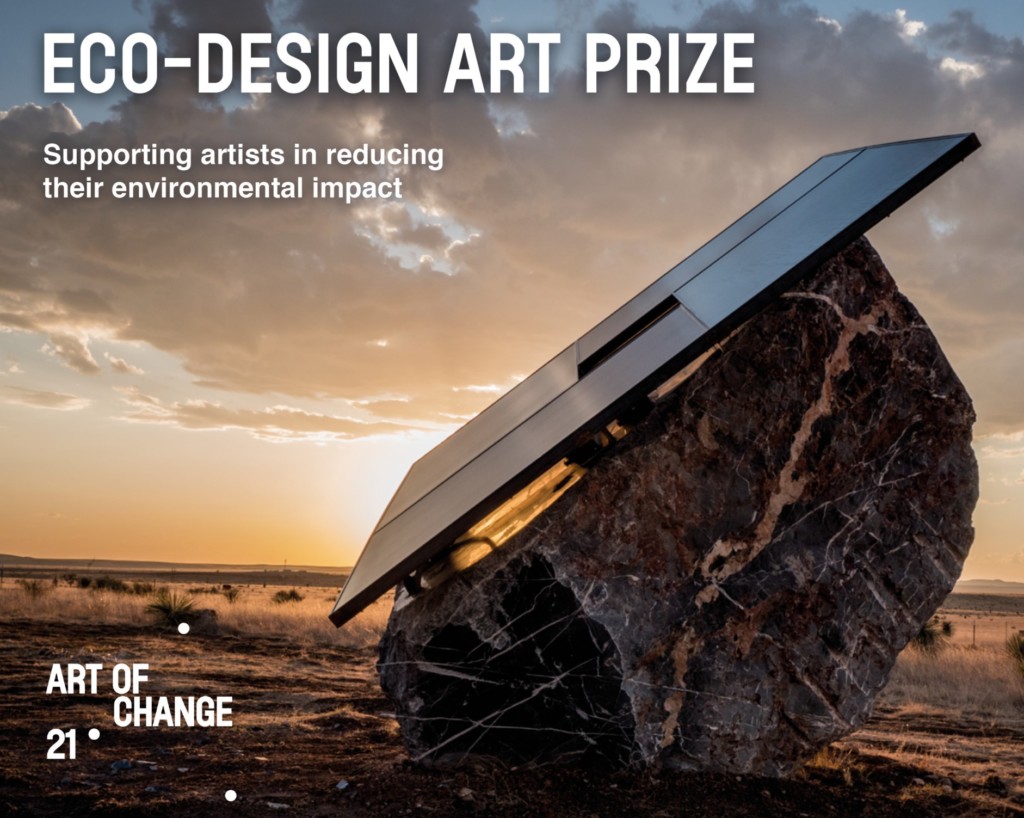All the indicators are in the red, whether they’re signaling climate, biodiversity or pollution. Marked by heatwaves, 2022 was the hottest year on record, providing undeniable proof that global warming is accelerating. Faced with these issues, an increasing number of artists are concerned about the environmental impact of their art. They have realised that the materials (concrete, glass, acrylic paint, etc.) and equipment they use (kilns, software, etc.), as well as how they transport artworks count more as causes of the environmental crisis than solutions.
In 2009, Long Horizons: An Exploration Of Art + Climate Change, a pioneering series of essays on the subject, was published by Julie’s Bicycle. Amongst other content, Anthony Gormley shared with readers his thoughts and commitments: “I am responsible for managing my own impact, including the carbon footprint of the studio and all its activities.” Gormley had already calculated his carbon footprint, reduced his use of air freight and insulated his studio, where he was getting ready to install solar panels. Since then, examples of good practice amongst artists, motivated in particular by the COP21 in Paris, have been multiplying. Examples include artworks being transported from Germany to Japan without using planes, artists calculating the carbon footprint of their installations (Olafur Eliasson) and exhibitions powered by solar power (Julian Charrière).
It is apparent today that eco-design is the most suitable and the most exhaustive method for measuring and reducing the environmental impact of artworks. Eco-design looks at the entire life cycle of a work of art, taking into account a wide range of environmental criteria (not only climate but also biodiversity, water, resources, human health…) but is almost completely absent in contemporary art. Why? In fact, there are three explanations: a tendency to focus on the sole issue of global warming; the added cost of sourcing relevant eco-design expertise; and finally, the absence of any case studies or practical examples to show how eco-design can be applied to the contemporary art sector (this method having previously only been applied for industrial products and consumer goods).
Is France showing the way? After Art Paris art fair, which has carried out the first life cycle analysis, the new Eco-design Art Prize by Art of Change 21* aims to promote the culture and practice of eco-design in artistic creation and brings together for the first time numerous artists and experts in this field.
It is addressed to all artists living in France and covers all artistic practices (sculpture, painting, video, digital, performance, photography, etc.). The Eco-design Art Prize was awarded on 10 January at the Palais de Tokyo to 12 winners selected by a prestigious jury of institutional directors and sustainability experts.

The laureates are rewarded by a 3-day coaching in eco-design at the Palais de Tokyo, by professionals and experts invested in the art sector. In addition, two of the twelve artists will also benefit from a Life Cycle Analysis (LCA). Calculated by eco-design engineers, the LCA provides a complete scientific evaluation of the impact of a creation on the main environmental issues, but its cost is not insignificant . (The coaching and the two LCAs is worth €40,000 in total). In addition, at the end of their support, the artists will receive a €1,000 grant for their time commitment. Supported by Maison Ruinart, the Eco-design Art Prize is organised in partnership with the contemporary art center, Palais de Tokyo, with the support of the Ministry of Culture and ADEME (the French Agency for Ecological Transition).
Alice Audouin
Impact Art News, December 2022 – January 2023 #41
Cover, the 12 laureates of the Eco-Design Art Prize : Pierre Clément, Raphaël Fabre, Pierre Gaignard, Agata Ingarden, Ángela Jiménez Durán, Eva Jospin, Ludivine Large-Bessette, Thomas LévyLasne, Louisa Marajo, Vincent Mauger, Théo Mercier, Manon Pretto
© Say Who – Valentin Lecron
*Publisher of Impact Art News

